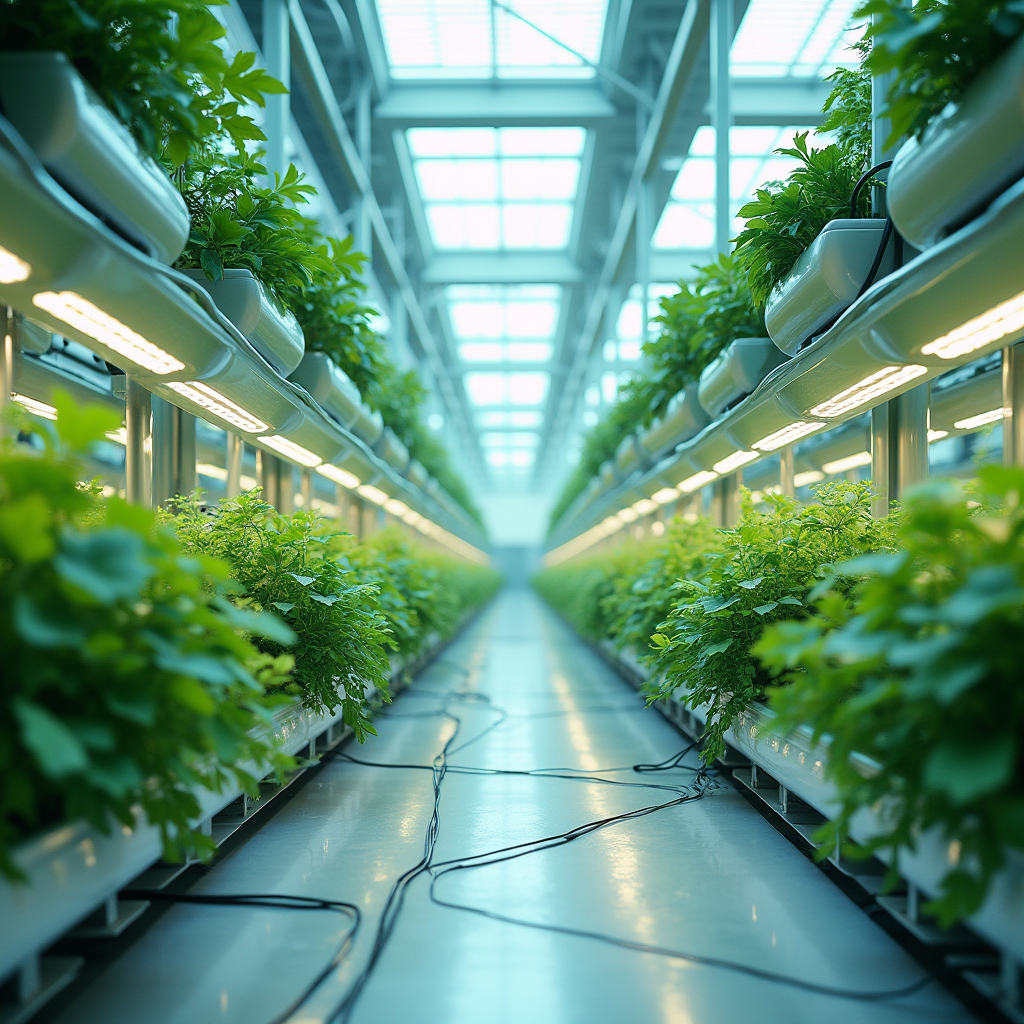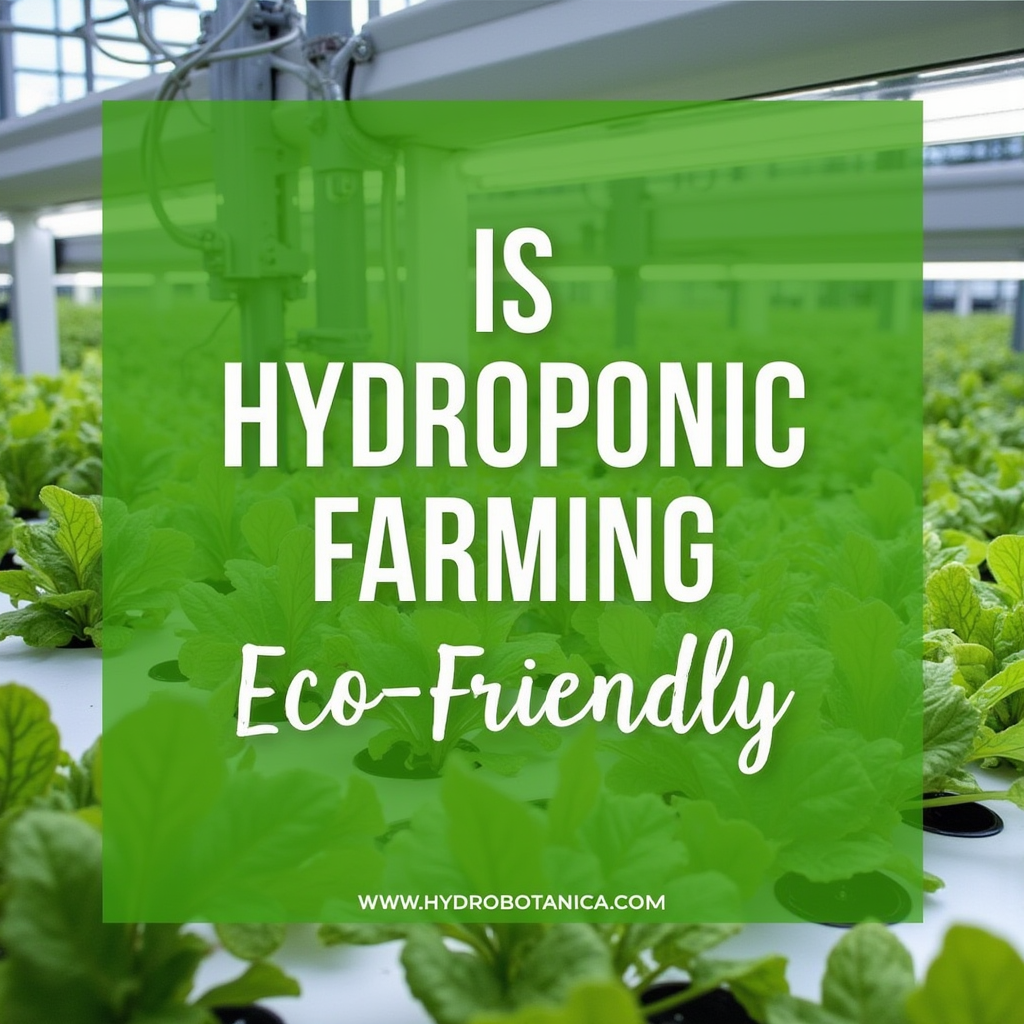With the rise of sustainable agriculture, many wonder: Is hydroponic farming eco-friendly or just another high-tech solution with hidden costs? Hydroponics—growing plants without soil, using nutrient-rich water—has gained attention as a way to produce food faster and in smaller spaces. But does it truly benefit the planet? Let’s dig into the environmental impact of hydroponics, weighing its pros, cons, and potential to revolutionize how we grow food in a climate-stressed world.
How Hydroponic Farming Supports Sustainability

Hydroponics is often praised for its eco-friendly farming methods, but what makes it stand out? Let’s break down its core environmental advantages.
Water Usage in Hydroponics: A Game-Changer for Drought-Prone Regions
Traditional agriculture accounts for 70% of global freshwater use, much of which is wasted through evaporation or runoff. Hydroponics flips this script: recirculating systems use up to 90% less water by delivering nutrients directly to plant roots. For example:
- Eurofresh Farms in Arizona grows hydroponic tomatoes using just 1/20th of the water required for soil-grown tomatoes.
- In water-scarce Israel, hydroponic greenhouses produce 30% of the country’s vegetables while using 40% less water than conventional farms.
This efficiency isn’t just about saving water—it’s about resilience. As droughts worsen globally, hydroponics offers a lifeline for regions like California’s Central Valley, where groundwater depletion has forced farmers to abandon fields.
No Pesticides, Healthier Ecosystems
Soil-free growing eliminates the need for most chemical pesticides, which pollute waterways and harm biodiversity. Vertical farms like Plenty Unlimited Inc. in California use integrated pest management (IPM), deploying ladybugs and other beneficial insects instead of toxins. Result? Cleaner produce and zero pesticide runoff into rivers.
Urban Farming Slashes Food Miles and Emissions

By growing food in cities, hydroponic farms reduce the carbon footprint of hydroponics linked to long-distance transport. Consider:
- Gotham Greens operates rooftop greenhouses in New York and Chicago, delivering greens to stores within hours of harvest. This cuts emissions from cross-country trucking by up to 90%.
- Singapore’s Sky Greens uses vertical hydroponic systems to grow 1 ton of veggies daily, reducing reliance on imports from 7,000 miles away.
Urban farms also repurpose abandoned warehouses or parking lots, preserving rural land from deforestation.
Does Hydroponic Farming Have a High Carbon Footprint?
While hydroponics saves water, its energy consumption sparks debate. Let’s unpack the numbers.
The Energy Dilemma: Lights, Pumps, and Climate Control
Indoor hydroponic farms rely on artificial lighting (LEDs or HPS lamps), water pumps, and HVAC systems. A 2019 Cornell study found that lettuce grown indoors produces 5x more CO₂ than field-grown lettuce. However, this varies wildly by energy source:
- AeroFarms in New Jersey powers its vertical farm with 100% renewable energy, slashing emissions.
- Farms in regions dependent on coal, like parts of China, face higher carbon footprints.
Traditional vs. Hydroponic Energy Use: A Nuanced Battle
- Soil Farming: Heavy machinery (tractors, harvesters) burns diesel, contributing to 10% of global CO₂ emissions. Long-haul transport adds another 6%.
- Hydroponics: Electricity usage dominates, but innovations like solar panels and geothermal cooling are tipping the scales. For instance, Iceland’s Friðheimar tomato farm uses geothermal energy to heat greenhouses year-round.
The Verdict: Hydroponics can outperform traditional farming in regions with clean energy grids. In coal-dependent areas, hybrid systems (e.g., greenhouses with natural light) are key.
Managing Waste in Hydroponic Systems
Hydroponic waste management is a mixed bag. Let’s explore solutions to its biggest challenges.
Nutrient Runoff: Turning a Problem Into a Resource
Used nutrient solutions can harm ecosystems if dumped untreated. Modern farms like BrightFarms recycle 100% of their water, filtering and reusing it for months. Some even donate spent solutions to community gardens as fertilizer—a practice called “nutrient upcycling.”
Plastic Pollution: The Hidden Cost of Hydroponics
Many systems rely on PVC pipes and plastic grow trays, which contribute to microplastic waste. Innovators are tackling this with:
- Biodegradable alternatives: Coconut coir, bamboo, and mycelium-based materials.
- Closed-loop systems: Lufa Farms in Montreal composts plant roots and stems into organic fertilizer, achieving zero waste.
Which Hydroponic Systems Are Most Sustainable?
| System | Water Use | Energy Use | Waste Risk |
|---|---|---|---|
| Nutrient Film (NFT) | Low | Moderate | Leaks if pipes clog |
| Deep Water Culture | Very Low | Low | Minimal |
| Aeroponics | Lowest | High | Tech parts may fail |
Aeroponics, while water-efficient, often requires replaceable nozzles. Simpler systems like DWC are easier to maintain with sustainable farming practices.
Hydroponics vs Soil Farming: Which is More Sustainable?
Let’s compare their environmental impact across four critical areas.
1. Water Efficiency: Hydroponics Wins
- Hydroponics: Uses 10-20% of traditional farming’s water.
- Soil Farming: Loses 50% of water to evaporation and runoff.
2. Land Use: Hydroponics Needs 90% Less Space
Vertical farms grow 3x more food per acre, sparing forests from being cleared for agriculture. For example, Spread Co. in Japan grows 30,000 heads of lettuce daily in a factory smaller than a soccer field.
3. Pollution: Hydroponics Avoids Chemical Runoff
Traditional farms contribute to 400+ ocean dead zones from fertilizer runoff. Hydroponics keeps nutrients contained.
4. Energy: Soil Farming Uses Less Electricity
While hydroponics uses more kWh, soil farming’s reliance on fossil fuels (for machinery and transport) often results in a larger carbon footprint of hydroponics when renewable energy isn’t used.
Soil Degradation: The Silent Crisis
Conventional farming destroys 24 billion tons of fertile soil annually through over-tilling and chemicals. Hydroponics bypasses this entirely, offering a solution for land scarred by industrial agriculture.
Can Hydroponic Farming Become 100% Sustainable?
The future of hydroponic sustainability hinges on three innovations.
1. Renewable Energy Integration
- Solar: Sundrop Farms in Australia uses solar desalination to grow tomatoes in the desert.
- Wind: The Netherlands’ Stadskas urban farm runs entirely on wind power.
2. Circular Systems for Zero Waste
- Composting: The Plant in Chicago feeds fish waste into hydroponic veggies, then composts plant scraps into fish food.
- Water Recycling: Green Spirit Farms in Michigan reuses 99% of its water through advanced filtration.
3. Eco-Friendly Materials
- Plant-Based Plastics: Companies like Agrilution use trays made from sugarcane husks.
- Organic Nutrients: Biobizz offers fertilizers derived from worm castings and kelp.
The Roadblocks to 100% Sustainability
- High Startup Costs: Renewable energy systems require significant investment.
- Tech Dependence: Aeroponics and AI-controlled farms need skilled labor, limiting accessibility in developing regions.
Real-World Examples of Eco-Friendly Hydroponic Farms
1. AeroFarms (New Jersey, USA)
This vertical farm uses 95% less water than soil farming and runs on 100% renewable energy. Their aeroponic system grows greens 2x faster, with zero pesticides.
2. Sustenir Agriculture (Singapore)
Using DWC systems, Sustenir grows kale and strawberries in underground bunkers, cutting import emissions by 85%.
3. Infarm (Germany)
Infarm’s modular hydroponic units in grocery stores reduce transport to “zero miles.” Each unit uses 90% less energy than traditional setups.
Conclusion: Is Hydroponic Farming Better for the Environment?
The answer isn’t black and white. Hydroponics slashes water use, avoids pesticides, and protects soil—but energy demands and plastic waste remain hurdles. The key lies in pairing it with renewable energy and closed-loop systems. For cities and arid regions, it’s a powerful tool for climate-resilient food production.
While no system is perfect yet, innovations in sustainable agriculture are accelerating. By supporting farms that prioritize solar power and recyclable materials, consumers can drive the shift toward truly eco-friendly hydroponics.
FAQs
1. Does hydroponics use more electricity than traditional farming?
Yes, but only if powered by fossil fuels. Solar or wind-powered farms can achieve a lower carbon footprint of hydroponics.
2. How can home gardeners adopt eco-friendly hydroponics?
Use rainwater collection, DIY compost teas for nutrients, and biodegradable pots.
3. Can hydroponic farms be organic?
Yes! The USDA certifies hydroponic crops as organic if they use approved nutrients and pest controls.
4. What crops are most sustainable to grow hydroponically?
Leafy greens (lettuce, kale), herbs, and strawberries—they grow fast and require minimal space.
5. Will hydroponics replace traditional farming?
Unlikely. It’s best suited for urban areas and water-scarce regions, complementing—not replacing—soil-based agriculture.





